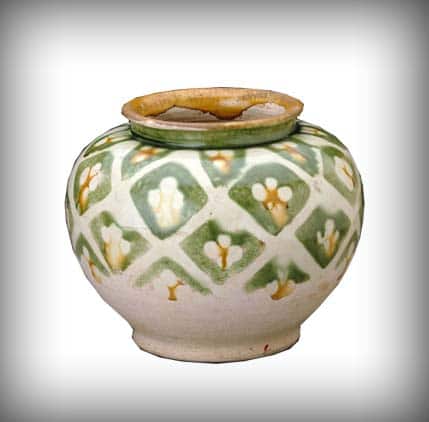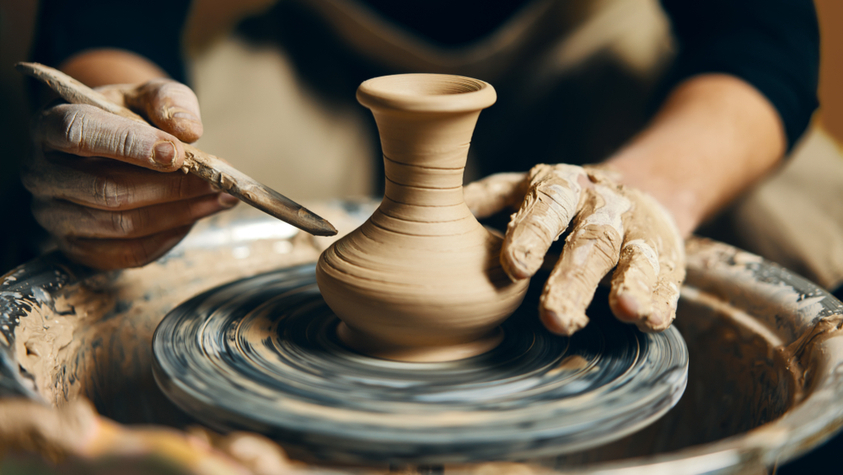The production and production of Zarrin Pham glaze began in the third century AH in Iran.
And the potters in this period were looking for very beautiful golden pottery.
In this way, they were able to create golden and very beautiful dishes by inventing the golden glaze in this period.
To use the golden-colored pottery glaze, the vessel was first heated and glazed by a conventional method.
And then the surface was cooled on the glaze.
Golden-colored pottery glaze is initially made by a combination of sulfur, silver oxide and copper oxide.
It was painted in combination with yellow or red ocher flowers and then the dish was placed in vinegar.
Types of pottery glazes
In alkaline glazes:
If the amount of alkali is high, the glaze will crack.
The use of sodium mineral deposits is not common in glazing and potash can be used.
Salt glazes:
There are also those that evaporate due to the heat of the fire and the steam from its fuel,
It makes sodium oxide, and this oxide, together with the silica in the dough, causes the pottery glaze.
Clay slurry glazes:
There is another type of pottery glaze that forms a thin crust on the pottery in the form of ferrous clay.
Red clays melt up to 1200 ° C.
Production of golden glaze:
One of the most important services of Islamic potters has been the growth and development of the pottery industry in the world.
Due to the brilliant and shiny appearance of the golden glaze, which resembled the luster of a precious metal,
This glaze was used to decorate pottery.


